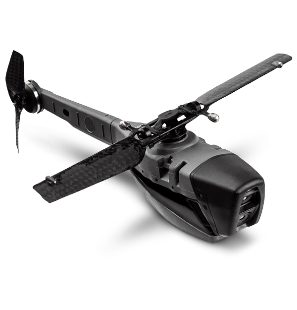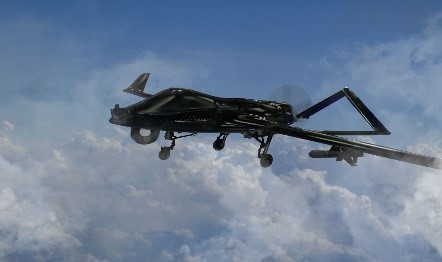
Miniature drones for close combat
With this miniature helicopter, soldiers can launch reconnaissance operations without intervening themselves in potentially dangerous places. The aircraft is quiet enough to enter buildings unobtrusively, can operate with or without GPS, in light rain and winds of up to 10 m/s. It is equipped with a replaceable camera to film day or night in thermal imaging.
Armed multifunctional drones
These drones, like the larger surveillance drones, are often also known as MALE or HALE drones - acronyms that stand for Medium Altitude Long Endurance or High Altitude Long Endurance. Although they are typically used in conflict zones, the primary purpose of these drones is not even necessarily military - it is capable of monitoring signals - in other words, scanning cell phone calls.All of these drones are managed by an electronic system on the ground or carried on the person.
Advantages
The use of drones fills the gap in current border surveillance by improving coverage along remote sections. Electro-optical (EO) sensors (cameras) can identify an object the size of a milk carton at an altitude of 10 km. The drones can also provide accurate, real-time imagery to a ground control operator, who would then disseminate this information so that informed decisions regarding the deployment of border patrol agents can be made quickly.Newer UAVs have more endurance. The ability of UAVs to loiter for extended periods of time offers significant operational advantages over manned aircraft. The longer flight times of UAVs mean that sustained coverage over an area previously exposed by GEOINT can improve border security.
Apart from reconnaissance and intelligence missions, drones can also be used as weapons.
Objectives
- Strategic and geostrategic watch
- Monitoring and evolution of activities and infrastructures
- Detection of changes
- Assessment of damage/loss
- Direct support to operations (civil, security, military)
- Situation analysis to facilitate decision making
- Monitoring and understanding a situation
- Subsidence study
- Study of site, itinerary
- Activity report
- Vulnerability studies
- Feasibility studies
- Risk assessment



